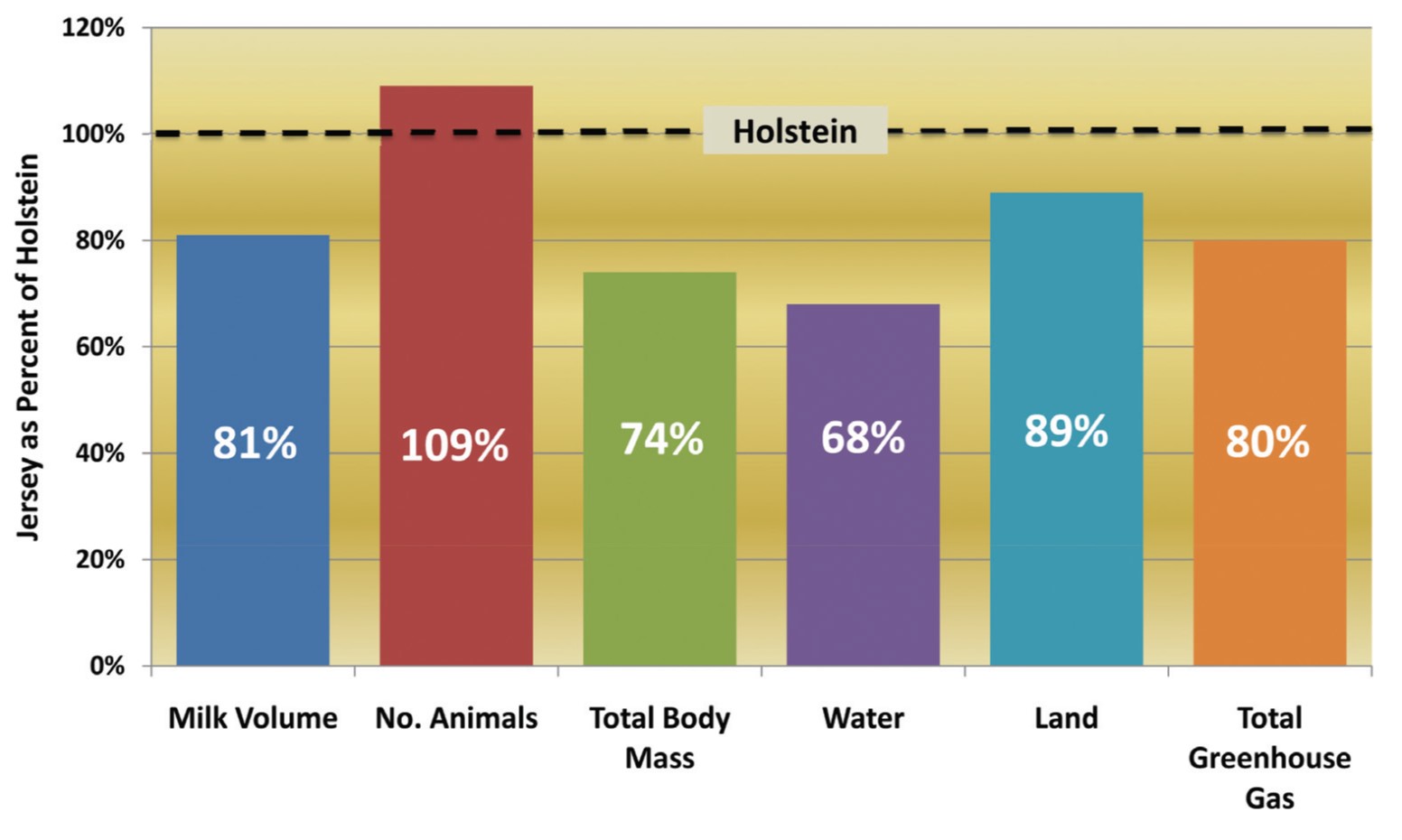Over 40% of milk produced in the United States is made into cheese, so sustainable and efficient production of that milk is vital to reducing the dairy industry’s carbon footprint. Using nutrient-dense milk produced by smaller Jersey cattle results in substantial reductions in water and land usage, fuel consumption, waste output, and greenhouse gas emissions compared to using Holstein milk.
Per unit of cheese, the Jersey carbon footprint (total carbon dioxide equivalents) is 20% less than that of Holsteins. Dr. Jude Capper of Washington State University and Dr. Roger Cady of Elanco Animal Health completed this research, which was published in the January 2012 issue of the Journal of Dairy Science.
The researchers analyzed farm milk production required for the annual manufacture of 500,000 metric tons (1.1 billion pounds) of Cheddar cheese. They compared two production systems, one using the large breed Holstein cow (average mature bodyweight, 1,500 lbs.) and the other the smaller Jersey cow (1,000 lbs.). Characteristically, the Jersey produces less milk measured by volume, but containing substantially higher fat and protein content. For the manufacture of Cheddar cheese, expected yields are 12.5 lbs. cheese per hundredweight (cwt.) from Jersey milk compared to 10.1 lbs./cwt. from Holstein milk.
Capper and Cady quantified the environmental impacts of producing Cheddar cheese from these different milks. The production system model included all primary crop and milk production practices up through and including milk harvest. It did not include transportation to the manufacturing plant, production and sales systems.
To produce 500,000 metric tons of Cheddar cheese (1.1 billion pounds):
• 8.8 billion pounds of Jersey milk was needed, 19% less than the required amount of Holstein milk (10.9 billion pounds).
• More Jerseys (91,460 animals) were needed to produce the same amount of cheese as Holsteins, but the total body mass of the Jersey population was 26% smaller (276 million fewer total pounds) compared to the Holstein population.
• Total feed consumption decreased by 1.75 million tons with Jerseys, and Jerseys produced 2.5 million tons less manure.
• Water use was reduced by 32% with Jerseys, conserving 66.5 billion gallons of water, equivalent to the needs of 657,889 U.S. households.
• The land requirement dropped by 240,798 acres (376 sq. miles), which was 11% less than that required to support cheese production from Holstein milk.
• The Jersey system used less fossil fuels than the Holstein system. The savings of 517,602 million BTUs in fossil fuel consumption is equivalent to freeing up the energy necessary to heat 6,335 U.S. homes per year.
• The 20% reduction in the carbon footprint for the Jersey system is equivalent to removing 443,900 cars from the road annually.

“Not only does the Jersey population conserve finite resources needed for cheese production,” Dr. Capper observed, “the total environmental impact is lower.”
Funding for this research was provided by National All-Jersey Inc. Visit the USJersey Sustainability page for the full study, press coverage, and more information.